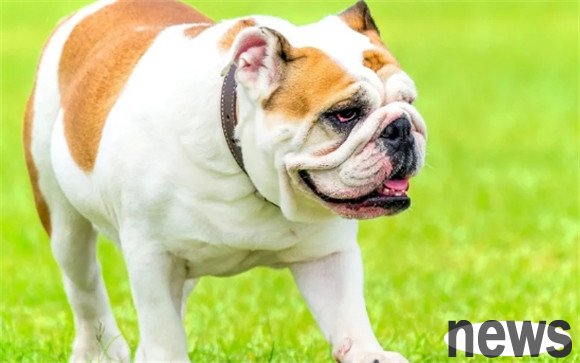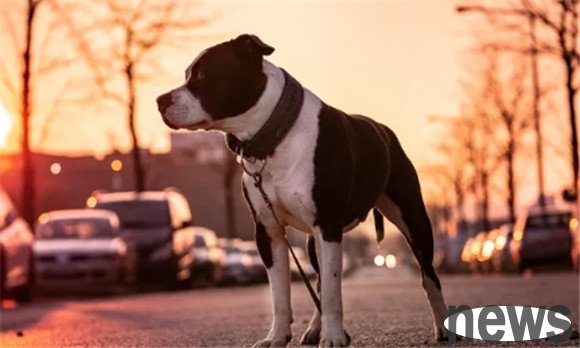Medium-large dogs and their characteristics
(15-30kg)
Standard Poodle
1. Source
Standard Poodle is native to Germany and its history can be traced back to Western Europe four hundred years ago. Initially, the breed was bred as a water hound for hunting in the water. Later, because noble women during the Louis XIV love and raise this dog, they were renamed "Daomao Dog". In the years that followed, the standard poodle gradually became popular in the French court and also performed well in the circus.
2. Features
1. Appearance characteristics: The standard poodle has a long and delicate head, a straight and elegant mouth, and its ears are just right on its shoulders, its tail is straight and upward, and its body is square, neither long nor short, and very symmetrical. Its hair colors are diverse, common ones include black, white, gray, brown, etc. The hair is thick and curly and needs regular trimming and care.
2. Character and behavioral characteristics: The standard poodle has a lively and active personality, alert, smart and friendly personality. They are very smart, ranked second in the canines with IQ, are easy to train, and can learn various skills and instructions. At the same time, they are also dog breeds that urgently need careful companionship. They are very afraid of loneliness, and are loyal and attached to their owners.
3. Swimming ability: Since standard poodles were originally bred as water hounds, they retain excellent swimming skills. In the water, they can show elegant and agile postures and perform various movements easily.
4. Adaptability: Standard poodles have strong adaptability and can adapt to urban life and rural environment. They are very friendly to their owners and family members, and are also good at getting along with other pets.

Border Collie
1. Source
The origin of the Border Collie can be traced back to the fifth century BC to the first century BC, when Celtics on the Western European continent and the British Isles came to Ireland with collies, which were called Collie. In Celtic dialects, “Collie” means “useful”, which shows their importance in shepherding work. Over time, these sheepdogs crossed with local long-haired collies, forming the unique breed of Border Collie. In 1915, the Collie was officially named after the Border Collie, which originated from the border area where they originated, near the border between England and Scotland.
2. Features
1. Appearance characteristics: The border collie has a medium body shape, a wide head, medium-sized eyes and oval, with an ear or a semi-standed tail. The forelimbs have developed bones and sufficient bone mass of the hind limbs. Its hair is soft and dense, and it presents a variety of colors, among which black and white are the most standard, and there are also variants such as red and white, blue and white, yellow and white and meteorite.
2. Character and behavior: Border Collie is smart, lively, and has a strong emotional attitude. They have extremely high IQ and are usually considered to be equivalent to a child aged 6 to 8, ranking first among more than 100 dog breeds. This allows the Border Collie to perform well in training and to quickly understand and execute the owner's instructions. At the same time, they are gentle and loyal, good at getting along with people and other animals, so they are often kept as family pets.
3. Working Ability: Border Collies have a strong shepherd instinct and can drive the flock to move or rotate through eye gaze. This makes them play an important role in the shepherd industry. In addition, the Border Collie has become one of the most competitive dog breeds in the Frisbee dog competition due to its excellent speed and flexibility.
4. Sports Requirements: Border Collies are a very active and active breed that requires a lot of exercise and stimulation to keep their physical and mental health. Therefore, raising border collies requires providing ample space for movement and often bringing them for outdoor activities and training.
Husky
1. Source
The origin of the Husky dog has many statements. One view is that it originated in the Arctic region and gradually brought from northeast Asia to Europe and the Americas with the migration of human civilization. Another saying is that the husky is raised by Siberian nomadic tribes from Asia and is grazed as the seasons move.
2. Features
1. Appearance characteristics: Husky has a beautiful appearance, medium body shape, developed muscles, and diverse fur colors. Common ones include black and white, gray and reddish brown. Its eyes are usually almond-shaped, blue or brown, and sometimes one eye is blue and the other eye is brown, which is very unique. The ears are triangular, upright and flexible.
2. Characteristic traits: Husky is independent, gentle and friendly, and full of enthusiasm for humans. They are smart and easy to train, have strong social skills, and like to interact with their owners and other animals. However, they sometimes appear neurotic and may do unexpected behaviors such as sudden running around at home or screaming in circles.
3. Sports needs: Husky was originally a sled dog, so it has extremely high endurance and vitality. They require a lot of exercise and activity, and if confined to a small space for a long time or lack sufficient exercise, they can become restless and even cause destructive behavior.
4. Adaptation: Huskies have very strong adaptability, and they can adapt well whether it is cold winter or hot summer. At the same time, they also show strong adaptability to environmental changes and can quickly integrate into the new family and living environment.
It should be noted that the Husky's "little expert in destroying the family" is well-known!
Samoyed
1. Source
Samoyed dogs are native to Siberia and are dog breeds bred by the indigenous Samoyed people of Siberia. This breed dates back to the 17th century, when Samoyed dogs were mainly used as grazing dogs and sled dogs, helping people work in severe cold environments. By the end of the 19th century, with the activities of fur merchants, Samoyed dogs were taken to the United States and Europe and gradually became well-known and loved. Especially in the UK, it has won the favor of people because of its snow-white fur color. On the ranch, they are excellent working dogs that can assist the owner in managing the flock. In addition, they have performed well in various tasks such as search, rescue, blindness, and deaf guidance. Australian Shepherds are extremely obedient, allowing them to quickly adapt to a variety of work environments and perform tasks excellently.

Bassett Hound
1. Source
Bassett Hound, also known as Bassett Hound, is native to France and its history can be traced back to the 17th century. The Basset Hound originated from the Great Blue Gascone Hound and inherited the ancient olfactory bloodline. Initially, this hound was used to hunt hares. However, in 1911, the original variety had been extinct, and the existing variety was re-cultivated by Alan Baden. The Basset Hound was registered by the Federal Dog Raiser Club in 1991, and its breed has been officially recognized and protected.
2. Features
1. Appearance characteristics: The head of the Bassett Hound is neat and narrow, with a wedge-shaped skull, and a distinct occipital bone. Their noses are black and well-developed, with a slightly hooked nose, and a plump but not exaggerated edge. Additionally, the Basset Hound is known for its huge round head, very long and soft ears, sad eyes and wrinkled forehead, which makes them look like a sad clown in appearance. Despite its smaller size, the Basset Hounds’ body structure gives them the strength and endurance of a big dog.
2. Character and behavioral characteristics: The Basset Hound is lively and cheerful, smart and obedient, understanding, loyal and cute. At home, they usually act amiable; when tracing their prey, they appear very stubborn and make loud noises. Although Basset Hounds may not be obvious in their emotional expression, they are very loyal to their owners. Furthermore, Basset Hounds have very sensitive olfactory abilities, which are said to be second only to the Blood Hunter, which makes them excellent in tracking and hunting.
3. Working Ability: Basset Hound is not only good at hunting small animals such as raccoons, foxes, rabbits, etc., but can also be used to hunt birds. Their head shape and keen sense of smell show a close relationship with the Bloodhound. At the same time, the Basset Hound is also a dog breed that is allowed to be registered by the American Dog Merchant Club, which further demonstrates its position in the working dog field.
American Staffordshire Gump
1. Source
The origin of the American Staffordshire Gump can be traced back to the United Kingdom, and its ancestors include bulldogs and a variety of Gump GOOD GOOD GOOD GOOD GOOD GOOD GOOD GOOD GOOD GOOD GOOD GOOD GOOD GOOD GOOD GOOD GOOD GOOD GOOD GOOD GOOD GOOD GOOD GOOD GOOD GOOD GOOD GOOD GOOD GOOD GOOD GOOD GOOD GOOD GOOD GOOD GOOD GOOD GOOD GOOD GOOD GOOD GOOD GOOD GOOD GOOD GOOD GOOD GOOD GOOD GOOD GOOD GOOD GOOD GOOD GOOD GOOD GOOD GOOD GOOD GOOD This breed was originally bred for dog fighting activities, but with the decline of dog fighting movement, people began to improve it to breed a new breed with both the courage and perseverance of a bulldog, as well as the personality and agility of a pirate dog.
In the early 19th century, Stafford Bull Terrier appeared in England and gradually crossed with the native Manchester Terrier in Britain, producing moderate-weight offspring. Around 1860, James Hinkers further hybridized the Stafford Bull Terrier, resulting in a pure white British Bull Terrier. In 1870, Stafford Bull Terrier was introduced to the United States and was raised there as a fighting dog. In the United States, people have further improved this breed, which has increased its weight and height, which is significantly different from the previous British breeds.
2. Features
1. Appearance features: The American Staffordshire Dog is compact and muscular, giving people a powerful and lively impression. Its head is strong and powerful, its eyes are dark and round, and its ears can be trimmed or not trimmed, but it is usually preferred not to trim to maintain its natural semi-vertical state. The body structure is firm and well-proportioned, with short and dense hair, adapting to various environments.
2. Character and behavioral characteristics: Staffordshire, USA is smart and reliable, and is particularly good at getting along with children. It is an ideal companion for the family. They are happy, good at socializing, stable and confident, and have strong adaptability. They can live in both rural areas and cities. However, they require the care and attention of their masters, and the lack of their masters’ company may make them feel sad.
3. Working Ability: Staffordshire Upper Dogs were originally bred as fighting dogs, but with the changes of the times, they gradually transformed into domestic companion dogs and guardian dogs. Nevertheless, they retain a strong sense of territoriality and guardian instinct to protect family members when necessary.